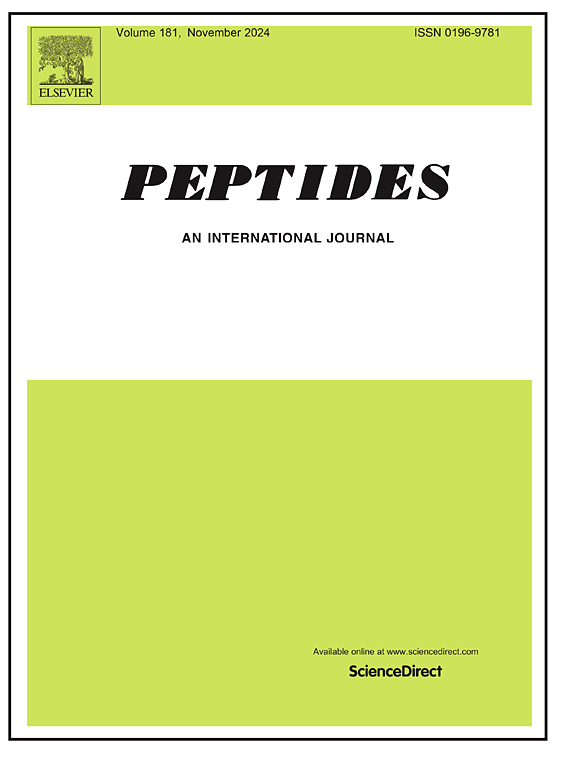高胰岛素血症和肝脂肪变性的小鼠模型,涉及神经分泌蛋白GL基因和低脂/中糖饮食。
IF 2.9
4区 医学
Q3 BIOCHEMISTRY & MOLECULAR BIOLOGY
引用次数: 0
摘要
以肝脏脂肪变性和胰岛素失调为特征的代谢功能障碍相关脂肪变性肝病(MASLD)正在成为慢性肝脏疾病的常见原因。虽然内分泌干扰在MASLD的发生和发展中被认为是至关重要的,但反映高胰岛素血症和肝脂肪变性的有效动物模型有限。在这里,我们提出了一个结合神经肽效应和膳食营养的MASLD小鼠模型。我们采用低脂/中糖饮食(LFMSD)下ICR小鼠下丘脑中编码神经分泌蛋白GL (NPGL)的基因的慢性过表达。Npgl过表达促进白色脂肪组织在2周内的脂肪积累。Npgl过表达后,基础胰岛素水平升高,胰岛扩大。组织学和分子生物学方法显示,Npgl过表达增强了肝脏脂肪生成,导致肝脏脂肪变性。9周后,Npgl的过度表达加重了肥胖和高胰岛素血症,导致高血糖。此外,Npgl过表达的延长通过改变脂质代谢途径加剧了肝脏中的脂肪积累。这些发现表明,Npgl过表达容易导致LFMSD下的ICR小鼠肥胖并伴有高胰岛素血症和肝脏脂肪变性。本文章由计算机程序翻译,如有差异,请以英文原文为准。
A murine model of obesity with hyperinsulinemia and hepatic steatosis involving neurosecretory protein GL gene and a low-fat/medium-sucrose diet
Metabolic dysfunction-associated steatotic liver disease (MASLD) featuring hepatic steatosis and insulin dysregulation is becoming a common cause of chronic hepatic diseases. Although the involvement of endocrine disruption in the onset and progression of MASLD is thought to be critical, there are limited effective animal models reflecting hyperinsulinemia and hepatic steatosis. Here, we propose a MASLD mouse model that combines neuropeptide effects and dietary nutrition. We employed chronic overexpression of the gene encoding neurosecretory protein GL (NPGL) in the hypothalamus of ICR mice under a low-fat/medium-sucrose diet (LFMSD). Npgl overexpression promoted fat accumulation in the white adipose tissues in 2 weeks. Basal insulin levels were increased and pancreatic islets expanded following Npgl overexpression. Histological and molecular biological approaches revealed that Npgl overexpression enhanced de novo lipogenesis, leading to hepatic steatosis. Nine-week overexpression of Npgl exacerbated obesity and hyperinsulinemia, resulting in hyperglycemia. Moreover, prolonged Npgl overexpression aggravated fat accumulation in the liver with a change in the lipid metabolic pathway. These findings suggest that Npgl overexpression readily leads to obesity with hyperinsulinemia and hepatic steatosis in ICR mice under an LFMSD.
求助全文
通过发布文献求助,成功后即可免费获取论文全文。
去求助
来源期刊

Peptides
医学-生化与分子生物学
CiteScore
6.40
自引率
6.70%
发文量
130
审稿时长
28 days
期刊介绍:
Peptides is an international journal presenting original contributions on the biochemistry, physiology and pharmacology of biological active peptides, as well as their functions that relate to gastroenterology, endocrinology, and behavioral effects.
Peptides emphasizes all aspects of high profile peptide research in mammals and non-mammalian vertebrates. Special consideration can be given to plants and invertebrates. Submission of articles with clinical relevance is particularly encouraged.
 求助内容:
求助内容: 应助结果提醒方式:
应助结果提醒方式:


